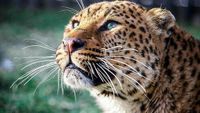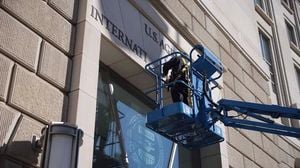Starting March 26, 2025, visitors to the official portal mos.ru can enjoy live broadcasts from the Moscow Zoo, allowing them to witness the daily lives of various animals in real time. The initiative aims to bring zoo inhabitants closer to the public, offering a unique opportunity to observe behaviors and interactions that are often hidden from view.
According to Svetlana Akulova, the General Director of the Moscow Zoo, the new broadcasts enhance the visitor experience by showcasing feeding, playtime, training, and social interactions among the animals. "With the launch of new broadcasts, more animals become closer and more accessible to visitors of the mos.ru portal. Observers can catch unique moments of feeding, games, training, and social interaction. This is not just an opportunity to watch rare and endangered species, but also a chance to immerse oneself in their world and understand their behavior and habits," Akulova stated.
The live streams will prominently feature two Himalayan bears, Fanya and Vasya, who reside in the older part of the zoo. These bears were rescued in late 2022 from a dire situation where they were kept in cramped cages and were in poor health. Zoo specialists provided around-the-clock care and devised a balanced diet, enabling the bears to regain their health and strength. This year, Fanya has entered hibernation for the first time in two years, while Vasya is still adjusting his natural biorhythms and remained active during the winter.
In addition to the bears, viewers can also watch Ryzhik, a red panda who was brought to Moscow from Poland in the autumn of 2015. This nocturnal creature emerges from his shelter several times a day, primarily in the morning and evening. Red pandas, often referred to as fiery foxes due to their striking coloration, are adept climbers but prefer to eat on the ground. Interestingly, despite being classified as predators, around 95% of their diet consists of young bamboo leaves and shoots, with the remainder including fruits, berries, mushrooms, and occasionally small rodents.
Also featured in the live broadcasts is a family of raccoon dogs, led by mother Titi, who takes care of her three young ones: Akim, Grusha, and the youngest, Shonya. Their enclosure includes a small stream where they enjoy splashing around, affirming their playful nature. Raccoon dogs are known for their curiosity and often explore the trees, sometimes curling up and resembling hedgehogs when they sleep. To enrich their environment, zoo staff have installed wooden walkways and hidden treats in tree hollows, encouraging the animals to engage in natural foraging behaviors.
The Department of Information Technology announced that these video broadcasts are accessible to viewers nationwide, allowing them to observe the animals and gain insights into their behaviors in a naturalistic setting. "On zoo.mos.ru, each animal has its own page, where visitors can not only watch the live stream but also learn interesting facts about them. Currently, the most popular pages feature the little panda Katyusha and her parents Dindin and Zhuya, as well as the manul Timofey and the capybaras," noted Boris Frolov, Deputy Head of the Department of Information Technology.
These online broadcasts from the Moscow Zoo have been available since the fall of 2024, and now include a variety of species such as manuls, big pandas, lynxes, elephants, caribou, meerkats, honey badgers, capybaras, and even gorillas and orangutans. The accessibility of this content allows animal lovers from all over the country to connect with the zoo's inhabitants from the comfort of their own devices, whether it be a smartphone, tablet, or computer.
As the zoo continues to evolve and adapt to modern technology, the initiative to provide live animal broadcasts stands out as a significant step toward fostering a deeper understanding and appreciation of wildlife. It highlights the importance of conservation efforts and the role of zoos in educating the public about animal welfare and environmental stewardship.
In summary, the introduction of live broadcasts from the Moscow Zoo marks a notable advancement in how zoos can engage with the public, providing an immersive experience that goes beyond traditional visits. By observing the animals in real time, viewers can appreciate the complexities of their lives and the efforts taken by zookeepers to ensure their well-being.






